I might not rank Ayelet Fishbach’s Get It Done as a must-read for everyone who wants to get motivated. But I do think at least the current Amazon rating of 4.3 stars is fair. Personally, I enjoyed it because I love evidence-based books on psychology, and this one delivers.
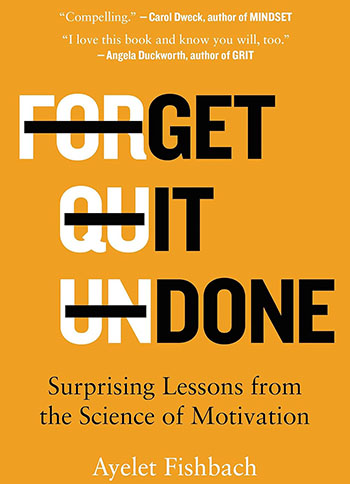
Right on the cover, the subtitle promises “surprising lessons from the science of motivation.” Also on the cover, the book is endorsed by big names most psychology readers will recognize – Carol Dweck (Mindset) and Angela Duckworth (Grit).
That made me wonder why Get It Done isn’t as widely known or as highly rated as those bestsellers. My guess: the style leans more academic, and some readers may find it a little dry. Many of the concepts also appear in other books, which might leave seasoned psychology readers saying, “I’ve heard this before.”
But Fishbach does a good job pulling some of the most important motivation and goal-achievement concepts together in one place, adds lesser-known insights, and also shares her perspective as one of the original researchers behind much of the work. In that way, it reminded me of Wendy Wood’s book on habits.
Fishbach is not a self-styled social media influencer. She is a PhD psychologist at the University of Chicago, and she has the academic chops to teach this. The premise goes beyond “science of motivation” – it’s about goals and how to achieve them using motivation research that’s been tested in the lab and the real world.
I think that’s important, because in recent years some authors in the behavior change space – especially habit writers – have dismissed the importance of this subject. “Forget about goals.” “Forget about motivation.” I’ve heard both things said by bestselling authors and highly followed influencers. Instead they insist success is “all about habits.”
Building good habits is critical, no doubt. But we should never forget about motivation. In fact, the cover design cleverly reinforces this point: the words forget, quit, and undone are printed with the prefixes crossed out, leaving only Get It Done. I saw it as a reminder that motivation and self-control are never irrelevant.
I also instantly was reminded of Zig Ziglar’s famous quote, “People often say that motivation doesn’t last. Well, neither does bathing – that’s why we recommend it daily.”
Part I: Choose Your Goal
One of Fishbach’s early themes is that goals should feel like aspirations, not chores. She emphasizes the classic advice to be specific (“put a number on it”) and highlights the importance of framing goals more often as “do” rather than “do not” (approach vs. avoidance). A major focus is intrinsic motivation, which I believe is a hugely important area of study.
Here’s a key point:
“If you can find a way to make the path to your goal enjoyable or exciting, you’ll be intrinsically motivated, which means you’ll stick to it longer.”
This is why fishbach offers practical tips for boosting motivation by making goal pursuit more fun. She adds:
“If you love your work, you’ll do your job because it feels right. If you’re someone who enjoys working up a sweat, you have no trouble getting yourself to the gym. If you’re intrinsically motivated, you’ll feel eager to stay on task. You don’t want to quit.”
When you’re intrinsically motivated, the activity itself feels like play, not work. You do it for its own sake, and sometimes the activity even becomes the goal. For example, maybe you started exercising just to lose weight, but you discovered the process itself gave you more energy, more confidence, and made you feel good.
Personally, I wish she had gone deeper into the three classic drivers of intrinsic motivation – autonomy, competence, and connection (from Edward Deci’s self-determination theory). She circles back to connection and social support later in the book, but Deci’s work would have been a natural addition here.
Part II: Keep Pulling (Avoiding the “Middle Slump”)
Fishbach points out something most of us have experienced: it’s easier to start strong, and easier again to finish when the finish line is in sight, but the middle can feel like a slump. Long middles are dangerous, so she emphasizes breaking goals into shorter sub-goals.
In the Burn the Fat Inner Circle, we’ve often discussed 12 weeks as a great time frame for fitness transformation. But Fishbach’s ideas might make you think about breaking that into 12 one-week transformations – or at least weekly projects. She even suggests breaking a single day into morning, afternoon, and evening “mini-chapters,” so you can frame a healthy lunch as “the end of the morning” or “the start of the afternoon.”
This connects with the fresh start effect that I’ve written about before (from Katy Milkman’s work). We’re almost always more motivated at the beginning of something. By finding arbitrary landmarks to call new beginnings, you can renew motivation throughout the process.
Another standout idea from this section: learning from negative feedback. “Failure can be a teachable moment,” Fishbach says. “If you allow yourself to learn from failure, it can be a powerful force.” That fits perfectly with what I’ve been teaching about transformational vocabulary. Instead of saying, “I failed,” you can say, “I learned.” If you learned, you didn’t fail.
Part III: Competing Goals and Self-Control
This part stresses the importance of choosing your battles. It’s not that you can’t have multiple goals, but you need a hierarchy so parallel goals don’t interfere with each other. Sometimes you compromise to find balance; sometimes you simply have to prioritize.
Fishbach also dives into self-control traps. She explains that self-control can be developed over time, but it can also be temporarily depleted. That means constantly “flexing the self-control muscle” isn’t ideal – you’re better off reducing temptation in the first place. Identify your traps. Know them. And never underestimate how much stress or fatigue can weaken your resolve.
To stay on track, she suggests:
- Future orientation: Think about your future self, and the impact that one action repeated over years could have on your life.
- Identity focus: Consider the type of person you want to be. Aligning with identity is even more powerful than focusing on outcomes.
- Pre-commitment strategies: Do something in advance to lock yourself in. This could be a reward, a penalty, or the classic “if-then” implementation intention (e.g., If it’s 6 am, then I put on my running shoes).
The section closes with a powerful reminder: motivation requires patience. This is hugely important if you’re going after health and fitness goals. It goes beyond fitness too. Studies show that patient people who can delay gratification are more successful in all domains of life. Fishbach shares several strategies for cultivating patience, which are all simple and practical.
Part IV: Working With Others
The final chapters highlight the role of social support and connection. Role models matter, and having people around you who encourage you makes a huge difference. Fishbach devotes three chapters to this, giving social support more attention than almost any other topic in the book.
This ties back into self-determination theory’s three drivers: autonomy, competence, and relatedness. While Fishbach doesn’t directly discuss Deci and Ryan’s work, the overlap is clear. What I appreciated is that she went beyond the most basic advice of “find role models” or “join a support group,” and dug into how going after your goals with others can boost your motivation in unexpected ways.
Final Thoughts
The big ideas in Get It Done are simple but important: goals matter, motivation matters. Fishbach makes the case, shows you how to set goals effectively, and explains how to harness motivation using science.
Yes, the book might be a little slow in spots, but I’m still surprised it hasn’t reached the popularity of Mindset or Grit. I think it fits into that same class. Fishbach shares dozens of studies, yet she always brings it back to practical strategies you can use right away.
I enjoyed Get It Done and can easily recommend it. If you’re interested in the psychology of behavior change – and especially if you want both evidence and practical tools – you’ll get value from this book.
You can Get This Book At Amazon: amzn.to/42iF9hs (Amazon associates affiliate link)
CLICK HERE To Discuss this book in the Burn The Fat Inner Circle forums (members-only
– Tom Venuto, author of,
Burn the Fat, Feed the Muscle


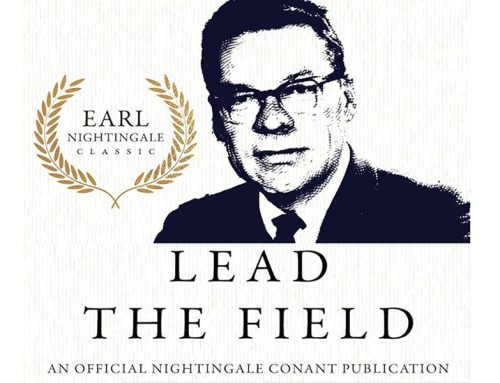
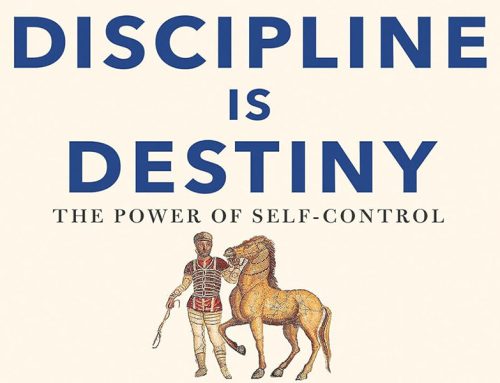
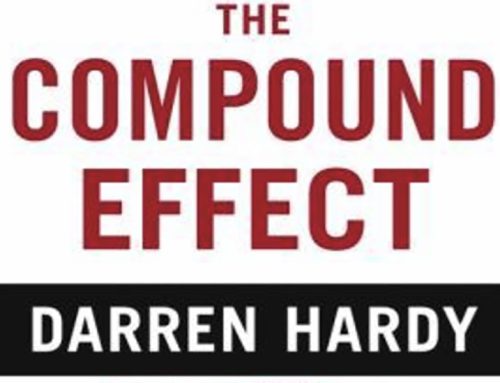
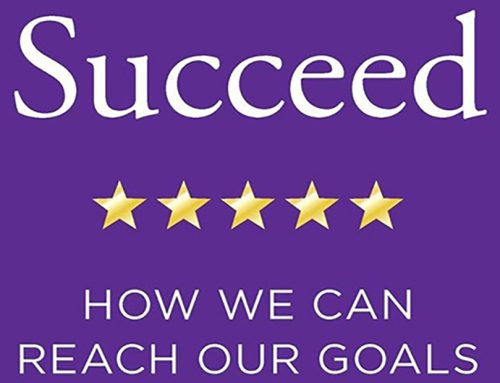
Leave A Comment